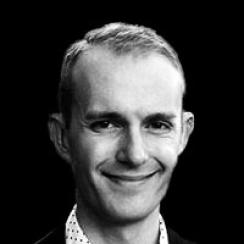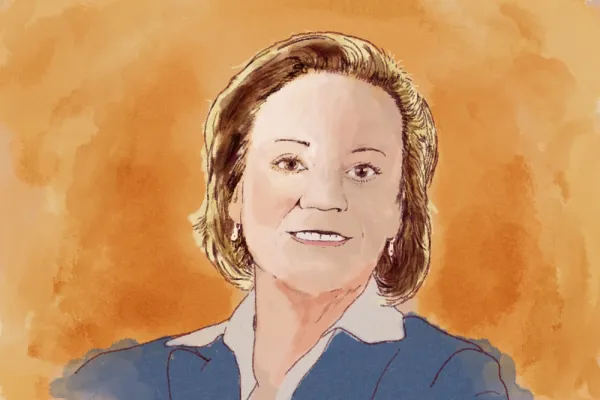At its annual investor conference on Tuesday, Goldman Sachs displayed new branding for the event, in which the “G” and “S” were joined together in a ligature. It was a more subtle version of the bank’s message about itself, and especially its recently formed asset and wealth management division — which Goldman Sachs CEO David Solomon highlighted as the key to the firm’s growth strategy.
“I think one of the most significant things we’ve done over the course of the last three years is to really take a bunch of disparate businesses inside Goldman Sachs and organize them in a very, very powerful platform,” he said.
According to Solomon, the firm made specific management changes last year as part of this transformation. Marc Nachmann was named the global head and Julian Salisbury was named the chief investment officer of the newly created asset and wealth management division. Those two, along with others, are continuing the task of better connecting parts of the bank.
“As we look forward as a firm, we are set up to drive management fee growth and this is key to meeting our firm-wide target,” Solomon said.
Groups within Goldman’s asset management business were historically siloed, with their own executives and technology. Unifying those things has freed managers from operational tasks and allowed them to focus on investing and collaborating.
In his own presentation Tuesday, Nachmann said his division has all the ingredients in place to create value for shareholders.
“Some people told me that being a captive active manager as part of a large bank is a disadvantage. I disagree. I think it’s quite the opposite. At least at Goldman Sachs, the ability to leverage the wider Goldman Sachs ecosystem is an incredible competitive advantage, the drive tire ability to deliver differentiated client experience and generate strong investment performance,” Nachmann said.
The wealth and asset management business has more than $2.5 trillion in assets under supervision that generated $8.8 billion in management and other fees in 2022, up from $6.1 billion in 2019, a 13 percent compound annual growth rate. It is projected to generate more than $10 billion in 2024.
Goldman is also now one of the largest alternative asset managers with $450 billion in assets after raising $179 billion from 2020 to 2022. It outpaced its initial $150 billion goal for the period and is now trying to top $225 billion before next year. Alternatives contributed $1.8 billion in management and other fees last year.
There’s a lot of room for the alternative investments platform to grow, too, according to Solomon. Goldman has done limited business with institutional investors, the biggest allocators to the asset class, he said.
“That’s a new muscle group for Goldman Sachs for us to go out and raise institutional money across our whole platform,” Solomon said about alternative investments.
And according to Solomon, pension funds, endowments and other institutions are interested in engaging the biggest asset managers that offer a long menu of opportunities across asset classes.
“What we’re finding from big institutions around the world is that’s exactly who they want to partner with, and they’re very open to that,” he said. ”That’s a new part of Goldman Sachs, something we’re working on and we’re continuing that progress.”







